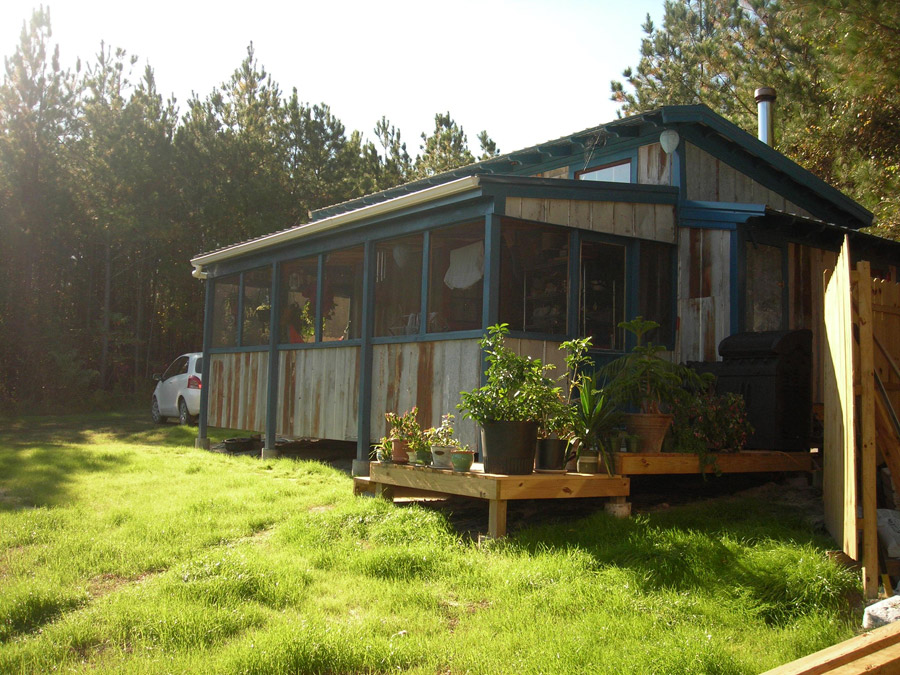

The good news is that Colorado Springs has a solar rebate that is worth $0.25 per watt. This example system currently costs $9250. So instead of bringing the DC power from your panels into one inverter by your breaker box, you bring AC power directly to the breaker box from the 18 microinverters. This system uses microinverters, where each solar panel has its own small inverter mounted on the rack right behind it. Let’s look at the system that fits the needs of the Colorado system we just calculated. But these grid-tied solar power systems are a great starting point. Since it is tricky to get a one-size-fits-all kit, you may need to customize the system to fit your needs.
Worst states for off grid living install#
If you are a do-it-yourselfer who wants to install the solar system on your house yourself, or with the help of an electrician, you can buy a solar system that is already designed to work together. We only need 18 solar panels to do the job. This will cut our electric bill, while keeping the solar system small enough to fit on our roof. Then we’ll just buy the last 25% of electricity we use from the electric company. It tells us that we need a 5400 watt grid-tied solar system to make 3/4 of our power. Since Colorado Springs wasn’t in the list, we picked the next closest city, Pueblo, CO. In the example to the left, we have a house in Colorado Springs, CO that uses 1000kWh a month, and we want to off-set the electric bill by 75%. Once you see what size solar system you need, you can take a look at some of our grid-tied solar kits we’ve pre-designed. To get an idea of the size of grid-tied solar you would need for your location, take a look at your electric bill to see how much electricity you currently buy from the grid, and go to our grid-tied calculator. The same solar system can make 3x’s more power in Scranton, Pennsylvania than in the Arctic. How much power a solar panel can generate depends on your location. The output of the inverter connects to your house’s breaker box, feeding that solar energy into your house or out to the grid, depending on how much energy you are making or using. That gives you a 75% cost savings on your electric bill.Ī grid-tied solar system generally consists of solar panels, racking to mount them on your roof or in the yard, and an inverter to convert the DC power from the panels to the AC power your house needs. So if you use 1000kWh (kilowatt hour) in a month, but you made 750kWh with your solar panels, you end up only buying a net total of 250kWh from the electric company. This means you can buy a solar system that is big enough to provide you savings on your electric bill, but small enough to fit on your roof or yard, or in your budget. The beauty of grid-tied solar is that you don’t have to make all of the electricity you use, you can just make some, and buy the rest, same as usual. When you are buying electricity, your meter is spinning forwards. When you are selling your extra solar electricity, your electric meter is spinning backwards, giving you credits.

If you make more electricity than you are using, you sell it back to the grid, and they in turn sell it to your neighbors. But on sunny days, your solar panels will generate some, or all, of the electricity you are currently using during the day. Grid-tied solar simply means that you are still connected to the electric company, and still buying electricity from them at night when the sun is down, or when your solar system isn’t making as much as you are using. If you want to see the cost difference between owning your solar system and leasing it, you can read our blog comparing the two options. A solar power system with batteries will cost more than simple grid-tied. Let’s take a look at the most common way to “go solar” and the cost.ĭepending on your locations, after incentives, a grid-tied system that is installed by the homeowner may be as little as about $1 a watt, or up to $4 a watt or more if professionally installed. It’s more than just putting a solar panel on your roof to make solar electricity. Some peoples’ definition costs a lot more than others’. “Going solar” means different things to different people.


 0 kommentar(er)
0 kommentar(er)
